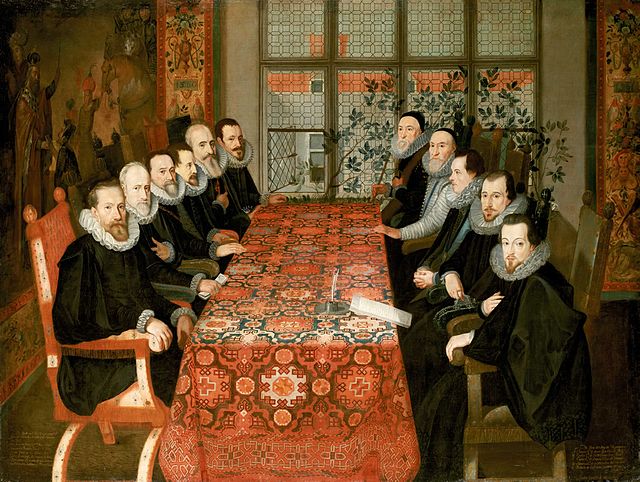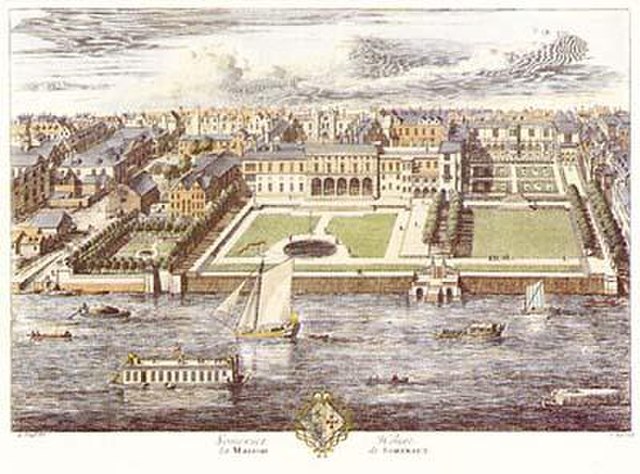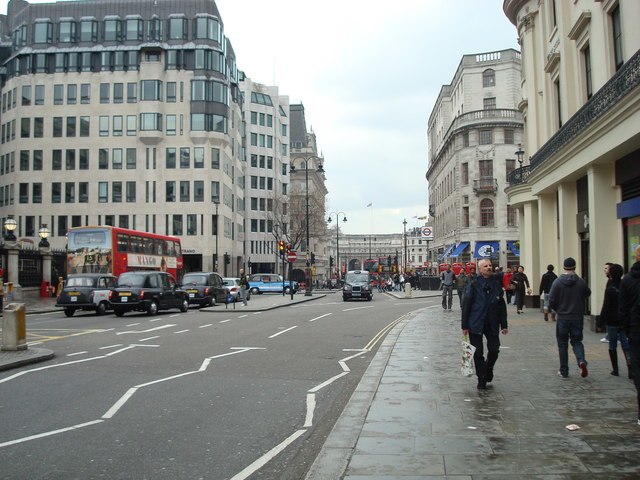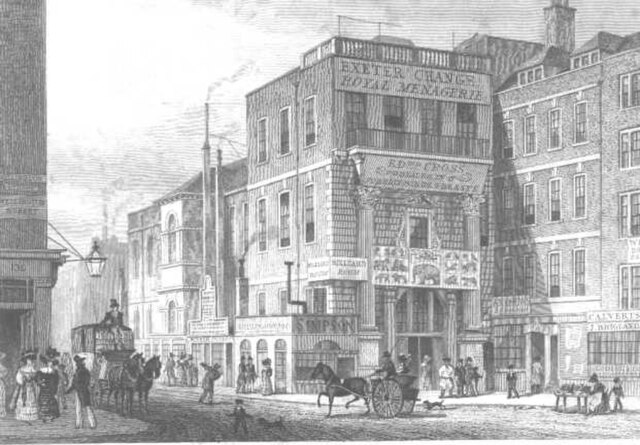Somerset House is a large Neoclassical complex situated on the south side of the Strand in central London, overlooking the River Thames, just east of Waterloo Bridge. The Georgian era quadrangle was built on the site of a Tudor palace originally belonging to the Duke of Somerset. The present Somerset House was designed by Sir William Chambers, begun in 1776, and was further extended with Victorian era outer wings to the east and west in 1831 and 1856 respectively. The site of Somerset House stood directly on the River Thames until the Victoria Embankment parkway was built in the late 1860s.
Courtyard of Somerset House from the North Wing entrance (September 2007)
The Somerset House Conference 19 August 1604
Old Somerset House, in a drawing by Jan Kip published in 1722, was a sprawling and irregular complex with wings from different periods in a mixture of styles. The buildings behind all four square gardens belong to Somerset House.
The Thames from the Terrace of Somerset House Looking Towards St. Paul's, c. 1750 by Canaletto
Strand is a major thoroughfare in the City of Westminster, Central London. The street, which is part of London's West End theatreland, runs just over 3⁄4 mile (1.2 km) from Trafalgar Square eastwards to Temple Bar, where the road becomes Fleet Street in the City of London, and is part of the A4, a main road running west from inner London.
Strand at Charing Cross in April 2008, looking towards Trafalgar Square and Admiralty Arch
The original Somerset House in 1722
A 19th-century print showing St Mary le Strand and the Strand front of Somerset House
Exeter Exchange, viewed from the Strand in the early 19th century







